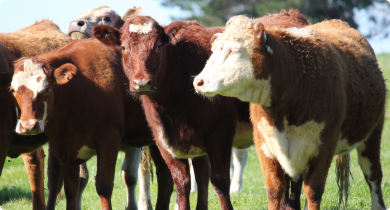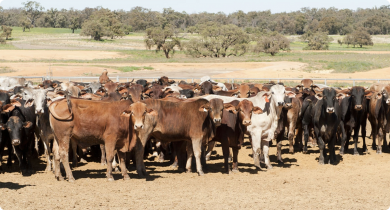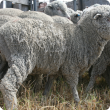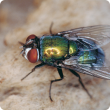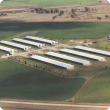Livestock & animals
The Department of Primary Industries and Regional Development supply chain support, research and development and rigorous biosecurity systems underpin the economic success of Western Australia’s livestock industries. In 2011/12, the WA livestock industries contributed 26% of the state’s agriculture, fisheries and forestry production, worth approximately $2 billion at the farm gate.
WA is a world leader in live exports, super fine wool production and dryland sheep and grain systems. Both cattle and sheep systems are focused on export markets to Asia and the Middle East. WA also has innovative, world-class integrated dairy and pork industries meeting local and South East Asian demand for safe, fresh milk and pork. The WA poultry industry is growing strongly as a result of increasing domestic consumption.
Global demand for high-quality, safe animal protein and products produced according to high animal welfare standards will continue to rise in coming years. Increasingly DAFWA will partner with industry -- locally, nationally and internationally -- in transformational business projects to capitalise on this demand.
Filter by search
Filter by topic
- Livestock management (59) Apply Livestock management filter
- (-) Remove Livestock species filter Livestock species
- (-) Remove Management & reproduction filter Management & reproduction
- Sheep (44) Apply Sheep filter
- Pests, weeds & diseases (16) Apply Pests, weeds & diseases filter
- Livestock health & diseases (15) Apply Livestock health & diseases filter
- Diseases (15) Apply Diseases filter
- Biosecurity & quarantine (13) Apply Biosecurity & quarantine filter
- Biosecurity (13) Apply Biosecurity filter
- Beef cattle (11) Apply Beef cattle filter
- Livestock biosecurity (11) Apply Livestock biosecurity filter
- Livestock disease surveillance (10) Apply Livestock disease surveillance filter
- Feeding & nutrition (6) Apply Feeding & nutrition filter
- Livestock parasites (5) Apply Livestock parasites filter
- Pigs (5) Apply Pigs filter
- Genetics & selection (3) Apply Genetics & selection filter
- Dairy cattle (3) Apply Dairy cattle filter
- Climate, land & water (3) Apply Climate, land & water filter
- Poultry & birds (2) Apply Poultry & birds filter
- State Barrier Fence (2) Apply State Barrier Fence filter
- Invasive species (2) Apply Invasive species filter
- Land use (2) Apply Land use filter
- Pasture management (1) Apply Pasture management filter
- Pastures (1) Apply Pastures filter
- Rangelands (1) Apply Rangelands filter
- Mechanical, physical and cultural (1) Apply Mechanical, physical and cultural filter
- Water (1) Apply Water filter
- Food, export & investment (1) Apply Food, export & investment filter
- Control methods (1) Apply Control methods filter
- Crops (1) Apply Crops filter
- Goats (1) Apply Goats filter
- Land use planning (1) Apply Land use planning filter
- Meat quality (1) Apply Meat quality filter



